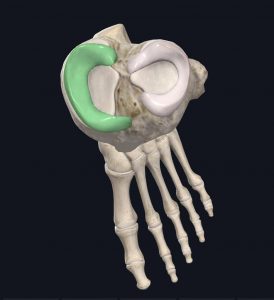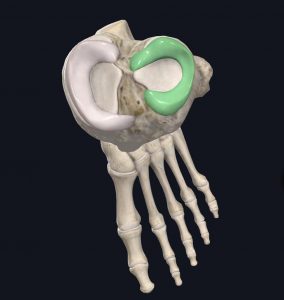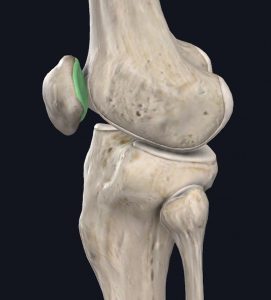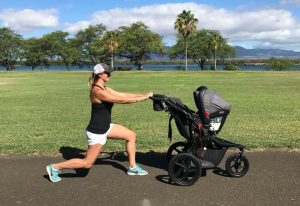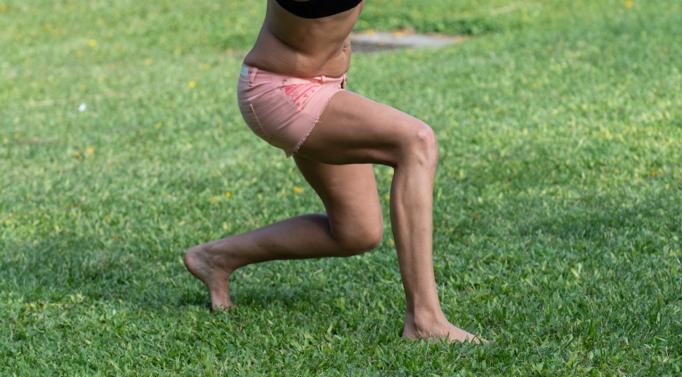
Knees go through a lot. They help you walk, run, stair climb, kneel, hike, and swim. You name the activity, and they’re probably involved.
With all that demand, it makes sense that the knee goes through wear-and-tear. The medical term for wear-and-tear is arthritis.
Arthritic changes are common and normal. Compare it to developing gray hair or wrinkles. With time, these “degenerative” changes happen.
Most people will develop osteoarthritis (OA) in their joints. Many won’t even know about arthritic changes unless they’ve received an x-ray or MRI.
Knee OA becomes a problem when the joint undergoes more load than it can support. The knee becomes painful and it’s difficult to do regular activities, decreasing quality of life. (2) Nearly 20% of Americans over the age of 45 will be affected by arthritic changes and seek care. (3)
If you’re one of the 20%, don’t wait to get treatment. Reach out to JACO Rehab as soon as you notice limitations. Book a session at any of our Oahu locations. We can help you!
The Knee Joint and Arthritis
The bones that comprise the knee joint are the femur (thigh bone) and tibia (shin bone). On the surface of the tibia, you have two menisci made of fibrous cartilage. They act as shock absorbers when you walk, run, or do anything on your feet. But they can’t keep it up forever, especially if muscles aren’t activating properly to help.
Your menisci will develop wear-and-tear over time, fraying here and tearing there. Accumulated degeneration will eventually become OA.
- Medial Meniscus in Knee (highlighted)
- Lateral Meniscus in Knee (highlighted)
Images courtesy of Complete Anatomy
You can also develop arthritis at the patella, or your kneecap. Under your kneecap, you have a layer of cartilage that helps the bone glide over the joint when you bend and straighten your knee. Excessive kneeling or recurring subluxation/dislocation of the kneecap can cause wear-and-tear to this cartilage.
- Side view of knee, cartilage under patella (highlighted)
Images courtesy of Complete Anatomy
What Causes Knee Arthritis?
There are several risk factors for osteoarthritis. You can prevent some risks, but not all.
The biggest risk factors are: (1)
• Age > 65 years old
• Female gender
• Obesity
• History of previous injury to the same knee
Recent research has also been suggested that these are potential risk factors that can accelerate arthritis: (3)
• High inflammatory diet
• Sedentary lifestyle
But if I move the knee less, will there be less wear? That sounds right, but the body doesn’t quite work that way.
Cartilage and bones adapt to changes in load. Your cartilage can increase thickness in response to gradual increase to activity. With a sedentary lifestyle, cartilage stays thin, leaving very little margin for typical wear-and-tear from daily human activities like walking and stairclimbing. Muscles need activity too. Without strong muscular support, the joint has less shock absorption and more stress on internal structures. (1, 3)
What Should I Do When My Knee Arthritis is Painful?
If you’re starting to notice gradual onset of pain with daily activity, you should get your knee assessed as soon as possible by a physical therapist. Early intervention in arthritic conditions can help prevent more painful episodes and preserve your quality of life.
Heck, it may even help you avoid surgery.
The longer you wait, the more difficult it is to treat painful osteoarthritis. In severe cases, patients will resort to partial or total knee replacements.
If your doctor is suggesting surgery, look into scheduling a prehab appointment.
How Do I Treat Knee Arthritis?
If you’ve already been diagnosed with knee arthritis and it’s causing pain or limitation, see a physical therapist to determine what you need to work on. The top two focuses should be:
- Maintaining mobility: You’ll want to ensure you have full range of motion in your knee. You should be able to straighten and bend it without pain or restriction. If you can’t, a therapist can help you find pain-free ways to work on the joint’s mobility and flexibility of surrounding muscles. Joint mobility issues above and below your knee can influence what your knee feels, so making sure your body moves well as a whole is also important.
- Building strength: Your knee joint needs the help of your muscles to provide support and dissipate outside forces. The muscles in your hips, thighs, shins, ankles, and feet all play an important role in your body mechanics and can influence what forces your knee experiences.
Your weak points may not be the same as your neighbor’s. That’s why it’s important to see a health care professional to get properly evaluated and receive guidance on what you need to do to keep moving!
Physical Therapy for Knee Arthritis
Physical therapy is the first line of treatment for knee arthritis. It has excellent outcomes, especially when caught early. It is strongly recommended among medical professionals as the best initial method to preserve the joint. (1)
At JACO Rehab, we evaluate your knee and neighboring joints to see if there are any imbalances that are contributing to excessive joint wear.
We collect range of motion measurements and strength assessments to see where you’re starting. We will also look at functional movements (walking, squatting) and ask about home environment, work demands, or anything else that is important to your recovery.
You’ll learn exercises and stretches that help improve your mobility and strength as it relates to your specific deficits. Every session is customized to your needs.
As we already stated, strengthening is one of the most important parts of therapy. Muscles need to be strong enough to control forces going through the knee. It takes time to develop this type of strength, so you must be patient.
Between each session, you’re expected to keep up with exercises and stretches on your own. Since you only see physical therapy 1-3 hours per week, you’ll need to do a lot independently. Your physical therapist will prescribe a home exercise program that helps you stay on track. They will update it as appropriate when you return for the following sessions.
Once you graduate from your final physical therapy session, you should continue the exercises on your own to maintain progress. Eventually, you can decrease how often you perform them, as you’ll discuss with your therapist.
- Incorporate your exercises into your routine!
How Do I Prevent Knee Arthritis?
We know the major risk factors, other than history of previous injuries: Age >65, female gender, obesity.
Don’t forget the two newly established ones: Inflammatory diet and sedentary lifestyle.
Understanding your risks is the first step toward prevention. If you identify that obesity, diet, and sedentary lifestyle are risk factors, you can start preventing progressive knee arthritis now!
- Keeping weight under control helps preserve the joint. The knees will have to accept any weight that goes through them. You can offload the knees by losing even a few unnecessary pounds.
- An active lifestyle can help keep weight in-check and improve meniscus thickness. Low-impact activities like biking or swimming are great places to start. You can even progress a walking program as tolerated. A physical therapist or trainer can help you begin. Aerobic exercises are great, but don’t forget to strengthen. Resistance training can help develop the muscles needed to support the knee joint and distribute force away from the cartilage. A physical therapist or trainer can help you start a strengthening program, too.
- Although it’s not a physical therapist’s scope to advise on specific diets, there are many credible resources that can help you identify inflammatory foods and tell you how to cut down on them. Ask you doctor to point you in the right direction.
What Happens if Physical Therapy Doesn’t Help?
We don’t want to start therapy with the mindset that it will fail. Make sure you explain your doubts to your physical therapist. Lay it all on the table. You and your therapist can figure out a way to make you as successful as you can be.
Keep in mind that a physical therapist’s goal is not to cure the condition. Arthritis is not curable, but it is manageable. A therapist’s job is to give you the tools you need to manage your condition and give you a great head-start.
You may not be 100% pain-free after your rounds of physical therapy, but you will:
• Recognize your limits
• Know how to progress your exercise regimen so that you can push your limits over time
• Understand which exercises you need to focus on and why
• Learn how to approach difficult movements and activities
• Figure out how to decrease pain if it occurs
If your pain progresses despite conservative efforts, you’ll see your doctor to determine what the next best steps will be in your care.
Reach out!
If you need physical therapy, we look forward to seeing you at JACO. If you put in the work, you’ll learn valuable information on managing your condition. You may even prevent surgery. Call JACO Rehab today.
Written by Nicole Hernandez, DPT
Sources
1. Mora JC, Przkora R, Cruz-Almeida Y. Knee osteoarthritis: pathophysiology and current treatment modalities. J Pain Res. 2018 Oct 5;11:2189-2196. doi: 10.2147/JPR.S154002. PMID: 30323653; PMCID: PMC6179584.
2. Vitaloni, M., Botto-van Bemden, A., Sciortino Contreras, R.M. et al. Global management of patients with knee osteoarthritis begins with quality of life assessment: a systematic review. BMC Musculoskelet Disord 20, 493 (2019). https://doi.org/10.1186/s12891-019-2895-3
3. Wallace, I. J., Worthington, S., Felson, D. T., Jurmain, R. D., Wren, K. T., Maijanen, H., Woods, R. J., & Lieberman, D. E. (2017). Knee osteoarthritis has doubled in prevalence since the mid-20th century. Proceedings of the National Academy of Sciences, 114(35), 9332–9336. https://doi.org/10.1073/pnas.1703856114
